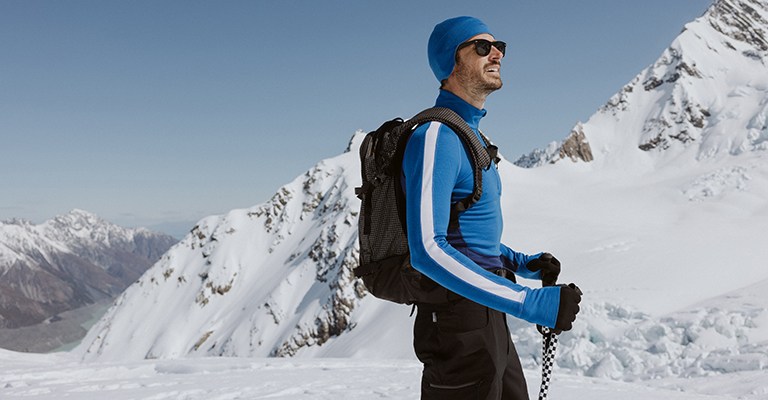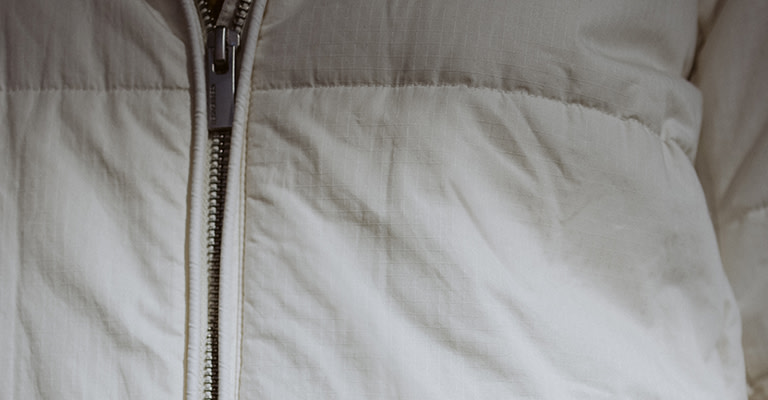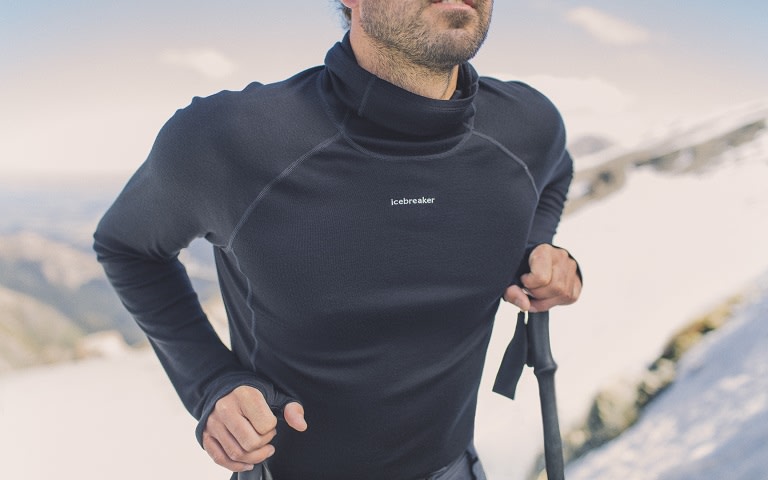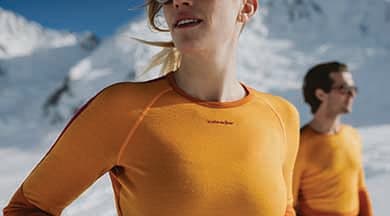Which fabrics insulate the best?
October 27, 2022 | icebreaker
Fabric type and properties are important knowledge in the world of outdoor activities. There have been many technological advances in outdoor clothing and accessories; one of the most important is insulation. You probably already know this essential characteristic, but which fabrics can claim it? And how can you know if your clothing does its job?
In this guide, we’ll cover everything you need to know about insulating fabrics and what your next-to-skin layer should be.
Insulating fabrics: the basics
Insulation preserves the air that has been warmed by your body, holding it close to your skin and reducing heat loss. With insulated clothing, you can trek through cold weather without losing precious body heat.
Many clothes have different types of insulation or additional qualities that help, depending on your body and activity needs. Clothing with lightweight insulation holds heated air while staying as light as possible so that you can stay warm without bundling under a thick, heavy coat or blanket.
Windproofing helps to keep strong winds outside of your layers, in turn boosting the insulating ability of your base layer or mid layers. Details like hoods, clothing cuts, and drawstring hems further help your clothing do its job by sealing off areas where air could escape.
There is a scientific way to determine the insulating ability of a material and which one is going to be best for you. The table below shows the measures of various insulating materials at preserving heat. Thermal conductivity is the rate at which heat transfers through the material, or in other words, how poorly the material insulates.
The calculation is expressed as the amount of heat that flows through the area over time: the higher the number, the more heat passes through; the lower the number, the more body heat the material preserves. You can use this rule to determine the most efficient insulator: the higher the number, the more body heat lost; the lower the number, the more body heat preserved.
Natural Fibers
| Material | Thermal Conductivity |
|---|---|
| Silk | 0.118 |
| Wool | 0.165 |
| Cotton | 0.234 |
Synthetic Fibers
| Material | Thermal Conductivity |
|---|---|
| Fleece | 0.035 |
| Wool-acrylic blend | 0.035 |
| Cotton-acrylic blend | 0.036 |
| Acrylic | 0.036 |
| Polypropylene | 0.111 |
| Polyester | 0.157 |
| Nylon | 0.171 |
| Rayon | 0.237 |
Of course, it’s important to remember that the power of insulating clothing comes from how you use it: strategic layering, knowing your body’s temperature and habits, and how your clothing fits against your body.
Wearing one wool sweater doesn’t make you ready for the arctic – it’s all about how you layer your clothing. Consider the environment you’re adventuring in and the properties of your gear to determine how to layer them.

Top insulating fabrics
Understanding each of these fabrics will help you choose which clothes to wear on your next adventure and how you can mix and match to reap the benefits of each article. Your base layer should primarily be moisture-wicking since sweat handling is the biggest responsibility of the next-to-skin layer.
Insulation should mostly be the job of your mid layer, though it definitely doesn’t hurt to be breathable so that moisture can pass all the way through your layers and out of your body’s microclimate. Your outer layer protects you against the environment, and in harsh, cold climates, an insulated coat with a proofed shell is an excellent option.
Wool
Perhaps the best-known natural insulator and still scientifically better than many other fibers. This fabric is an excellent temperature regulator, with the most insulation for the least weight. It also absorbs and wicks moisture effectively, though after a while it will start to feel damp and allow condensation.
Wool can even be comfortable on a warm day as well as cold, making it a versatile layer that can be an easy insulated coat on a temperate day or a powerful mid layer on an alpine adventure – and, of course, some excellently comfy socks.
Icelandic Wool
Icelandic wool comes from Icelandic sheep, animals that have adapted to an almost perpetually-cold and rainy environment. Icelandic sheep are quite unique for two things: their natural colors of black, grey, and brown and their layered wool.
Icelandic wool contains two different types of fibers: a coarse, long outer layer that protects from wet and cold weather and a soft, fine inner layer that insulates powerfully.
Merino wool
Merino wool is a natural fiber from Merino sheep, originally from Spain. It’s thinner and softer than classic wool but still boasts all the insulation, moisture-wicking, and odor-free benefits.
Merino wool works best for your body when all your layers are made of it since it creates a smooth route for sweat and vapor to escape your skin while the heat remains. But what makes merino wool truly unique is an ultra-fine fiber that makes it extremely soft!
Cool-Lite™
An icebreaker invention, what makes Cool-Lite™ so special is that it blends merino and TENCEL™ (a eucalyptus based fiber). This means it is a fabric which is immensely soft, breathable, and insulating. It naturally regulates your body temperature, keeping you warm in cold climates and cool in hot climates.
Cotton
Naturally, cotton is not always recommended as an outdoor fabric, but it can be engineered to improve thermal regulation and be advantageous. Insulating cotton fabrics are naturally comfortable, easy to care for, and windproof, a characteristic that other insulating fabrics often lack.
Many outdoor products that are made of cotton include coatings, finishes, or additional fiber layers to protect against moisture.

Fillings and Down
Your insulation options aren’t limited to one piece of clothing. Outer layers are often filled with natural fiber, so a jacket filled with natural down is a successfully insulated coat.
Fillings insulate by trapping the warm air coming off of your body in pockets amongst the fibers; the jacket or sleeping bag’s fabric is sealed to be water-resistant and also keeps the air trapped.
Down
Down is a filling made of the undercoat feathers of geese, ducks, and swans. It is incredibly lightweight and fluffy, making it not only comfortable but a formidable temperature regulator – hot or cold.
Down has the best warmth-to-weight ratio of all insulating fibers, but the outer shell of down items can pose breathability and moisture handling issues. Sweat and vapor cannot pass through the windproof layers, and down gets matted and messy when directly wet.
MerinoLOFT™
icebreaker’s custom MerinoLoft™ is natural, cruelty-free insulation. It has the best of both down and synthetic worlds: the lightweight and warmth of down, the low-bulk, and the machine washability of synthetics. MerinoLoft™ clothing stays warm while wet and is light enough to allow a full range of motion.
Thanks to this guide you now have all the knowledge you need to make sure you stay at the right temperature during your next adventure. Why not check out icebreaker’s range of hiking clothes and make sure you have all the gear to go with your expertise?
More for you

Why merino is perfect for snow sports | icebreaker
26 November 2021 | icebreaker

Choosing your merino wool base layer | icebreaker
22 December 2021 | icebreaker

How to stay warm outdoors with merino | icebreaker
10 February 2022 | icebreaker










